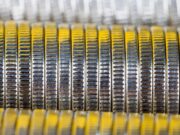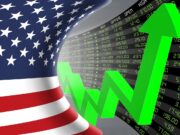Stocks fell this morning on news of stalled debt-ceiling negotiations in Washington after a crucial meeting between President Biden and House Speaker Kevin McCarthy failed to deliver a resolution. Investors have been closely monitoring debt-limit news and are hoping for a solution before June 1st, the so-called X-date.
Challenges for the stock market could arise at any time without warning. Unfortunately, no crystal ball can tell us what the future holds. That’s why it’s essential for investors to educate themselves about the tools available and prepare themselves for any circumstance.
Today’s trade alert features a tactic active investors use to hedge their portfolios and even to turn a quick profit if things get ugly. It’s an important tool to have in your tool kit for the next time you think a downturn could be coming. What’s more, this trading tactic typically carries much less risk than a shorting. Read on to learn how to put this valuable tactic into play.
ProShares Short S&P500 ETF (SH)
The main risk of traditional short-selling is that while profit is capped (a stock can only fall to zero), the risk is theoretically unlimited. Of course, other tactics can be used to cover a position at any time, but with a short-selling position, inventors risk receiving margin calls on their trading account if their short position moves against them. But there is another way that you can take a bearish position.
Inverse or “short” ETFs are another option that allows you to profit when a particular investment class declines in value. Some investors use inverse ETFs to profit from market declines, while others use them to hedge their portfolios against falling prices.
Over short periods you can expect that the inverse ETF will perform “the opposite” of the index over short periods, but a disconnect may develop over more extended periods. Inverse ETFs will decline as an asset appreciates over time. Therefore, inverse ETFs are not typically seen as suitable long-term investments. Furthermore, frequent trading often leads to an increase in fund expenses, and some inverse ETFs have expense ratios of 1% or more.
Inverse ETFs can be excellent day-trading candidates and highly effective short-term hedging tools when approached correctly. There are several inverse ETFs that can be used to profit from declines in broad market indexes, such as the Russell 2000 or the Nasdaq 100. Also, there are inverse ETFs that focus on specific sectors, such as financials, energy, or consumer staples.
With nearly $2.28 billion in assets, the ProShares Short S&P 500 (SH) is the largest inverse fund by value. Commonly used by investors as a hedging vehicle, the fund strives to deliver the inverse performance of the S&P 500 (SPX). If you’re concerned about the stock market falling, this fund that moves in the opposite direction of the largest 500 U.S. corporations is the simplest way to protect yourself.
It’s important to note that SH is designed to deliver inverse results over a single trading session, with exposure resetting on a monthly basis. Investors considering this ETF should understand how that nuance impacts the risk/return profile and realize the potential for “return erosion” in volatile markets. SH should definitely not be found in a long-term, buy-and-hold portfolio. The fund comes along with an expense ratio of 0.9%.
[stock_market_widget type=”accordion” template=”extended” color=”#5679FF” assets=”SH” start_expanded=”true” display_currency_symbol=”true” api=”yf”]












